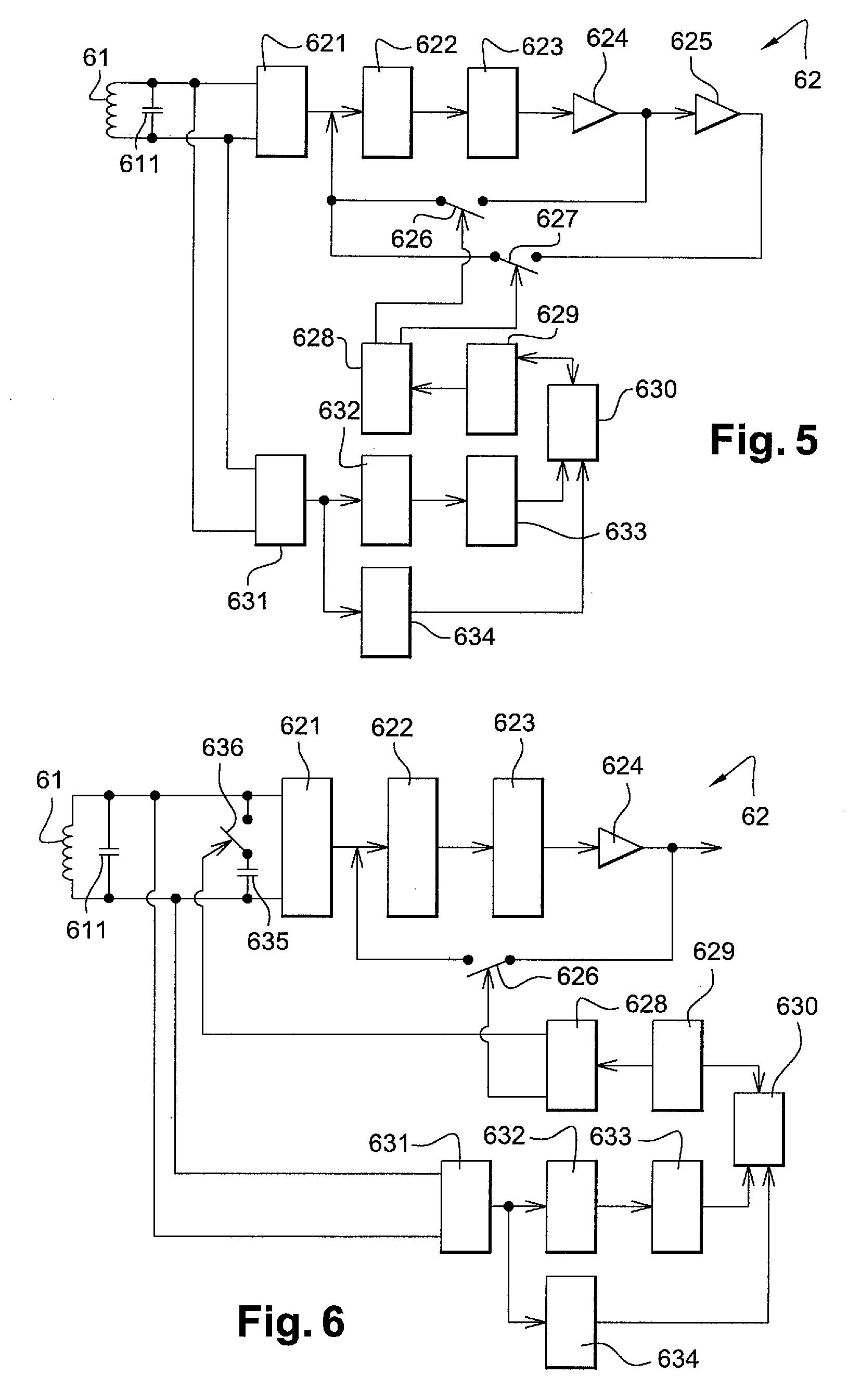Radio-frequency communication device, system and method
a radio frequency communication and communication device technology, applied in the field of radio frequency contactless communication, can solve problems such as the problem of integrating such a function in a mobile devi
- Summary
- Abstract
- Description
- Claims
- Application Information
AI Technical Summary
Benefits of technology
Problems solved by technology
Method used
Image
Examples
first embodiment
[0059]FIG. 4 is a highly schematic top view of a device 60 according to the invention, for example a contactless reader fitted in a mobile phone or a digital personal assistant.
[0060]Device 60 formed, for example, on a printed circuit wafer, comprises an antenna 61 consisting of a single conductor shaped as first loop 613 and second loop 615 nested inside first loop 613 with loops 613 and 615 having opposite flow directions.
[0061]Device 60 also comprises an integrated circuit 62 connected to the terminals of antenna 61 which is in charge of transmission and reception of data by antenna 61 as explained below in greater detail.
[0062]The surface areas of loops 613 and 615 are preferably substantially equal so that, when antenna 61 is exposed to a homogeneous magnetic field, the electromotive forces induced in loops 613 and 615 cancel each other out. The sensitivity of antenna 61 to a homogeneous magnetic field is thus minimized.
[0063]Also, the dimensions of antenna 61 are preferably ch...
second embodiment
[0078]FIG. 6 schematically shows circuit 62 which is especially suitable if the contactless reader is type B and the contactless card is type A.
[0079]In order to interrogate the contactless card, the second embodiment differs from that described in relation to FIG. 5 in that, instead of second multiplier 625 and associated second switch 627, a second capacitor 635 is connected to the terminals of antenna 61 via switch 636 in order to vary the antenna tuning, thereby producing type A carrier amplitude modulation.
[0080]The output signal of multiplier 624 therefore provides a high-level reference signal which is modulated by means of the second capacitor 635 and controllable switches 626, 636.
third embodiment
[0081]FIG. 7 schematically shows circuit 62 which is especially suitable if the contactless reader is type A, regardless of contactless-card type.
[0082]In this third embodiment, in order to interrogate the contactless card, circuit 62 comprises an oscillator 637 which generates a sine-wave signal having a frequency substantially equal to that of the carrier of the fixed reader and synchronized with the carrier, for example by means of a phase-locked loop (not shown).
[0083]A first variable-gain multiplier 638 and a second multiplier 639 are connected in series to oscillator 637; the second multiplier 639 is connected via a first switch 640. The outputs of the first and second multipliers 638, 639 are also connected respectively to the non-inverting and inverting terminals of a first subtracter 641.
[0084]Adder 642 is connected, via its inverting terminal, to the output of the first subtracter 641. The output of second subtracter 642 is connected, via a second switch 643, by its non-in...
PUM
 Login to View More
Login to View More Abstract
Description
Claims
Application Information
 Login to View More
Login to View More - R&D
- Intellectual Property
- Life Sciences
- Materials
- Tech Scout
- Unparalleled Data Quality
- Higher Quality Content
- 60% Fewer Hallucinations
Browse by: Latest US Patents, China's latest patents, Technical Efficacy Thesaurus, Application Domain, Technology Topic, Popular Technical Reports.
© 2025 PatSnap. All rights reserved.Legal|Privacy policy|Modern Slavery Act Transparency Statement|Sitemap|About US| Contact US: help@patsnap.com



